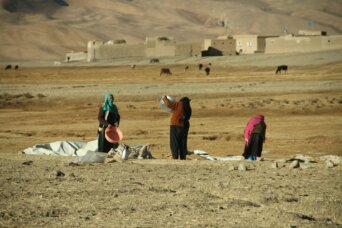- About
- Topics
- Picks
- Audio
- Story
- In-Depth
- Opinion
- News
- Donate
- Signup for our newsletterOur Editors' Best Picks.Send
Read, Debate: Engage.
| topic: | Humanitarian Aid |
|---|---|
| located: | Afghanistan |
| editor: | Shadi Khan Saif |
To turn the current crisis in Afghanistan into an opportunity for sustainable peace and development, the humanitarian world and the international community must look beyond Kabul towards the long-neglected rural quarters of the mountainous country.
In the past, the various types of governance systems - from monarchies to communism, from the West-backed democracy to the current Islamic autocracy - have been unable to serve the full population and gain popular support. This can be attributed, among many other prominent reasons, to the discontent felt against the elites by the broader segment of society that lives in the rural regions of Afghanistan. To them, the elites tend to forget that the country extends past the metropolis in their immediate sight.
There are many corners in in all 34 provinces of Afghanistan where the most basic infrastructure, such as roads and schools, are inefficient, and where peoples’ resources are scarce. However, when people from these remote towns and villages go to Kabul, they realise how far behind they are from their own capital city, let alone the rest of the world.
This is in no way to suggest that Kabul is all cosy, but this devastated city is simply an illusion and not at all representative of the conditions that all other Afghans endure in other regions of the country.
Setting aside the polarised political debate about decentralisation, it is clear that the devolution of power at the local level and the reduction of the disparity between urban and rural regions when it comes to resource distribution are paramount to providing the many deprived Afghans with an equal opportunity to a dignified life.
With the end of the Taliban-led insurgency, one hopes and expects the humanitarian world and the international community will reach out to the areas that were most marred by some of the bloody conflict. The Taliban rulers of the country are expected to behave as servants of the nation and facilitate the delivery of aid, rather than causing hurdles or influencing it in any other way.
Thanks to the persistent calls for urgent support and relief by some of the most reputable aid groups, the world’s attention is so far keen to help out the needy people in all of the 34 provinces of the land-locked country.
Having seen many current and previous relief and rehabilitation programs concentrated in and around Kabul, one fears that the difficulty of reaching the rural populations would eventually fail to break this vicious cycle of dependency.
And, of particular importance is to enshrine this philosophy in the mid-term and long-term development agenda that local and regional centres need to be established and strengthened to eradicate poverty across Afghanistan with systemic reforms.
Kabul, one of the oldest capital cities in the world, with a surging population of nearly six million, has swollen beyond its capacity to sustain itself, let alone serve as a functional centre for an entire war-ravaged country of nearly 40 million people.
Photo by Farid Ershad

